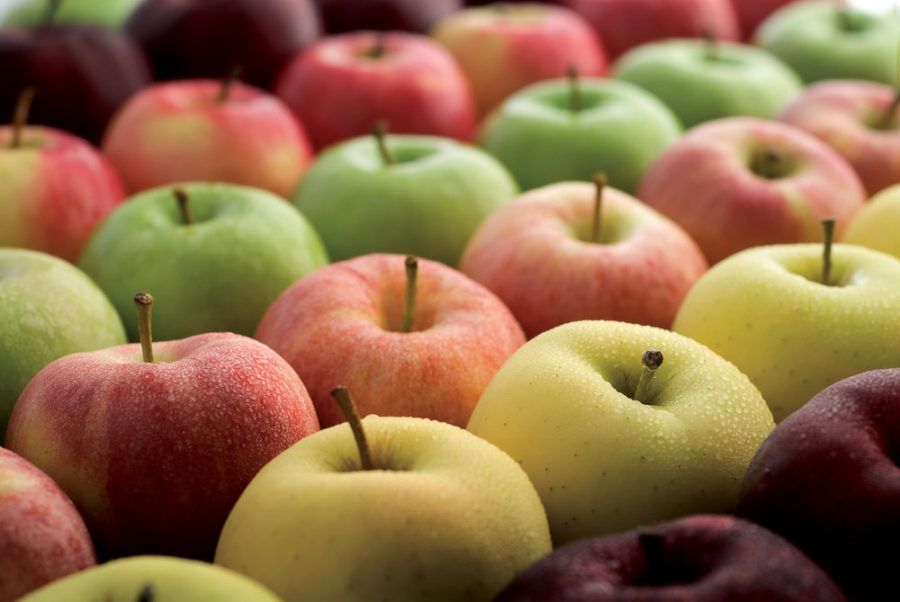
Science in the Glorious Quran: Floral Diversity
There are several verses in The Glorious Qur’an referring to the floral diversity on Earth. Interestingly, the Qur’an mentions about 22 plants belonging to 17 plant families. Let’s have a look at the following verses.
“وَفِي الْأَرْضِ قِطَعٌ مُّتَجَاوِرَاتٌ وَجَنَّاتٌ مِّنْ أَعْنَابٍ وَزَرْعٌ وَنَخِيلٌ صِنْوَانٌ وَغَيْرُ صِنْوَانٍ يُسْقَىٰ بِمَاءٍ وَاحِدٍ وَنُفَضِّلُ بَعْضَهَا عَلَىٰ بَعْضٍ فِي الْأُكُلِ ۚ إِنَّ فِي ذَٰلِكَ لَآيَاتٍ لِّقَوْمٍ يَعْقِلُونَ” (الرعد:4(.
“On Earth are adjacent terrains, and gardens of vines, and crops, and date-palms, from the same stem root or from distinct roots, irrigated with the same water. We make some taste better than others. In that are proofs for people who reason.” (Qur’an, 13:4)
“وَأَنزَلَ مِنَ السَّمَاءِ مَاءً فَأَخْرَجْنَا بِهِ أَزْوَاجًا مِّن نَّبَاتٍ شَتَّىٰ” (الرعد:53).
“And (God) has sent down water (rain) from the sky. And We have brought forth with it various kinds of vegetation.” (Qur’an, 20:53)
“وَهُوَ الَّذِي أَنزَلَ مِنَ السَّمَاءِ مَاءً فَأَخْرَجْنَا بِهِ نَبَاتَ كُلِّ شَيْءٍ فَأَخْرَجْنَا مِنْهُ خَضِرًا نُّخْرِجُ مِنْهُ حَبًّا مُّتَرَاكِبًا وَمِنَ النَّخْلِ مِن طَلْعِهَا قِنْوَانٌ دَانِيَةٌ وَجَنَّاتٍ مِّنْ أَعْنَابٍ وَالزَّيْتُونَ وَالرُّمَّانَ مُشْتَبِهًا وَغَيْرَ مُتَشَابِهٍ ۗ انظُرُوا إِلَىٰ ثَمَرِهِ إِذَا أَثْمَرَ وَيَنْعِهِ ۚ إِنَّ فِي ذَٰلِكُمْ لَآيَاتٍ لِّقَوْمٍ يُؤْمِنُونَ” (الأنعام:99).
“And it is He who sends down water from the sky. With it, We produce vegetation of all kinds, from which We bring greenery, [and] from which We produce grains in clusters. And palm-trees with hanging clusters, and gardens of grapes, olives and pomegranates, each similar, yet different (in variety and taste). Look at their fruits when they begin to bear, and the ripeness thereof. Surely in this are signs for people who believe.” (Qur’an, 6:99)
In the above verses God draws our attention to the following:
- The diversity of vegetation after rainfall is a sign from God
- Plants are diverse, even though they are irrigated with the same water.
- There are diversities of the same types of plants like grapes, olives, and pomegranates.
- In addition to the diversity of plants, God draws our attention to the fact that the enjoyment of the beauty of His creation and the availability of water are blessings amongst countless other blessings that God favours us with.
However, notice here that the term omam, used for faunal diversity, was not also used by the Qur’an to describe floral diversity. Perhaps this is because, unlike animals, plants are not moving creatures (Qur’an, 6:38).
Interestingly, micro-organisms, like bacteria, have been found to be both motile (mobile) and to communicate together through chemical signals (known as “Quorum sensing”), and therefore–by the definition of the Qur’an (6:38)–are classified as omam.
It may be concluded that God has referred to the diversity of both the flora and fauna on Earth in the Glorious Qur’an, something revealed more than 14 centuries ago, even though we human beings were not aware of this phenomenal fact before the eighteenth century.

The diversity of vegetation after rainfall in a desert (left), One root-one stem (middle) or one root – several trees (right).

The diversity of colours and tastes of grapes.

Pomegranate fruits and seeds of different colours (left). Bacteria can communicate through chemical signals (right).

